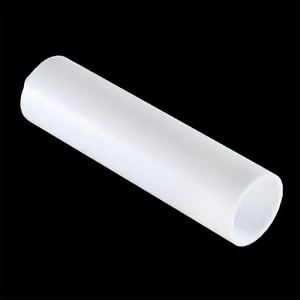In the world of 3D printing, every component plays a crucial role in ensuring the smooth operation and high-quality output of your prints. One such component is the PTFE tube, often referred to as the lifeline of your 3D printer. If you’re new to 3D printing or looking to enhance your printing experience, understanding what a PTFE tube is, its purpose, and how it can improve your 3D prints is essential.
What is a PTFE Tube?
PTFE stands for Polytetrafluoroethylene, a high-performance plastic known for its low friction, high-temperature resistance, and non-reactive properties. This makes it an ideal material for various applications, including 3D printing. In a 3D printer, a PTFE tube is used as a filament guide, ensuring the smooth and consistent delivery of filament from the spool to the hot end.
The Role of PTFE Tube in 3D Printing
In 3D printers, particularly those with a Bowden-style setup, the PTFE tube serves as a conduit for the filament. It guides the filament from the extruder, located at a distance from the hot end, to the hot end where the filament is melted and deposited layer by layer to create a 3D object. The low friction of PTFE tubing reduces resistance, allowing the filament to move smoothly, which is crucial for maintaining print quality and preventing clogs.
Why Use PTFE Tube for 3D Printers?
Benefits of PTFE Tubing
- Reduced Friction: PTFE’s low friction properties minimize the resistance faced by the filament as it travels through the tube. This ensures a consistent flow of material, which is key to high-quality prints.
- High-Temperature Resistance: PTFE can withstand temperatures up to 260°C (500°F), making it suitable for use with a variety of filaments, including PLA, ABS, and PETG.
- Resistencia química: The non-reactive nature of PTFE means it won’t degrade or react with the filament, ensuring longevity and reliability.
- Flexibility: PTFE tubes are flexible, allowing them to be used in various printer designs without compromising on performance.
Do You Need a PTFE Tube?
If your 3D printer uses a Bowden-style extruder setup, a PTFE tube is essential. It enables the precise feeding of the filament over long distances, which is necessary for optimal performance. Even in direct-drive setups, PTFE tubes are often used to guide filament into the hot end, reducing the risk of jams and ensuring smooth operation.
Choosing the Right PTFE Tube for Your 3D Printer
by Willi Nüchterlein (https://unsplash.com/@wllnu)
What Size PTFE Tube for 3D Printer?
En size of the PTFE tube you need depends on the filament diameter your printer uses. The most common filament diameters are 1.75mm and 3mm. For a 1.75mm filament, a PTFE tube with an inner diameter of 2mm and an outer diameter of 4mm is typically used. For a 3mm filament, a tube with an inner diameter of 3.2mm and an outer diameter of 6mm is suitable.
Is Capricorn PTFE Tube Really Better?
Capricorn PTFE tubes are known for their enhanced performance due to tighter tolerances and higher temperature resistance. They are often recommended for use in high-temperature and precision applications. If you’re looking to improve the quality of your prints and reduce the risk of filament clogs, investing in a Capricorn PTFE tube might be worthwhile.
How Does PTFE Tube Improve 3D Prints?
Using a high-quality PTFE tube can significantly enhance the reliability and quality of your 3D prints. The smooth filament path reduces the risk of snags and clogs, while the consistent feeding of filament ensures better layer adhesion and more precise prints.
Maintaining and Replacing PTFE Tubes
Signs You Need to Replace Your PTFE Tube
Over time, PTFE tubes can wear out, leading to decreased performance. Some signs that it’s time to replace your PTFE tube include:
- Increased friction or resistance when feeding filament
- Visible wear or damage to the tube
- Frequent filament jams or clogs
How to Replace a PTFE Tube
Replacing a PTFE tube is a straightforward process:
- Turn off your 3D printer and allow it to cool.
- Remove the filament from the printer.
- Disconnect the old PTFE tube from both the extruder and the hot end.
- Install the new PTFE tube, ensuring it is securely connected to both the extruder and the hot end.
- Re-load the filament and perform a test print to ensure everything is working correctly.
Conclusión
Understanding the role and importance of PTFE tubes in your 3D printer setup is crucial for achieving the best possible prints. Whether you’re a hobbyist or a professional, choosing the right PTFE tube can make a significant difference in your 3D printing experience. By selecting high-quality PTFE tubing and maintaining it properly, you can ensure consistent, high-quality prints and extend the life of your 3D printer.
Incorporate these insights into your 3D printing routine, and you’ll likely notice improvements in both the ease of use and the quality of your prints. Whether you’re wondering “what is a PTFE tube for” or considering if “Capricorn PTFE tube is really better,” the key takeaway is that a good PTFE tube is essential for optimal 3D printing performance.










